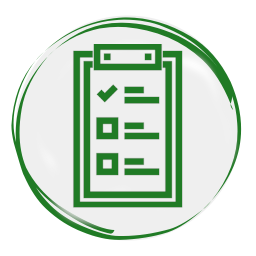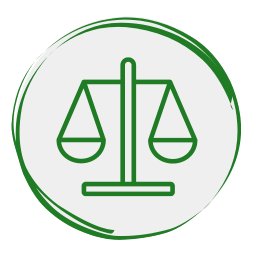6.2 Interview Structure
An employment interview is an exchange between a candidate and a prospective employer (their HR representative). Employment interviews come in a few shapes and sizes and may not be limited to only one exchange or interaction. Interviews may be used early on as part of the initial applicant screening process, or they can be conducted near the end of the selection process. An applicant may be screened by a quick phone or online interview before they ever meet an HR hiring manager or panel of interviewers face-to-face. Sometimes, the selection process includes formal testing, which includes personality tests or reference checks, before the selection interview takes place. Depending on the type of job, an applicant can anticipate answering questions, often more than once, to a series of people as they progress through a formal selection process.
The invitation to interview means the applicant has been identified as someone who meets the minimum qualifications and demonstrates potential as a viable candidate. Their cover letter, resume, or related application materials may demonstrate the connection between their preparation and the job duties, but now comes the moment when they will need to articulate those points out loud. The hiring manager has the opportunity to listen to the candidate and assess their non-cognitive attributes, such as communication skills and interpersonal skills, teamwork, leadership skills and organizational fit. The selection interview is the most widely used assessment tool in making hiring decisions.
Interview Structure – Unstructured vs. Structured Interviews
There are two types of interviews: unstructured and structured. The traditional unstructured interview is completely unplanned – questions are asked spontaneously, vary across candidates, and responses are not evaluated in any consistent manner. A structured interview, on the other hand, includes questions that are based on a thorough analysis of job requirements and the criteria required to perform the work. All candidates are asked the same questions, and their responses are assessed in a standardized manner against job-relevant criteria using a predetermined rating scheme. These features help to establish a clear link between performance at the interview and performance on the job and minimize the impact of personal bias on the assessment process. The following table presents the characteristics of structured versus unstructured interviews in terms of development, administration, evaluation, and interviewer training.
| Unstructured | Structured |
|---|---|
| Development | |
|
|
| Administration | |
|
|
| Evaluation | |
|
|
| Interviewer Training | |
|
|
Benefits of Structured Interviews
Structured interviews provide a number of advantages over unstructured ones, including:

Standardization. By asking the same questions and assessing responses according to the same job-relevant criteria, candidates have an equal opportunity to demonstrate their qualifications and to be assessed fairly.
Validity. Since questions are linked to job-related competencies, a candidate’s responses are more likely to predict their on-the-job performance. Research has shown that structured interviews are up to twice as effective at predicting job performance as unstructured ones.

Greater legal defensibility. When structured interviews are developed and administered according to professional guidelines, they are more likely to be legally defensible. To date, the following three components are reviewed by the courts when reviewing the use of interviews:
- The consistency of applying the interview across applicants;
- The job-relatedness of the interview questions and
- The extent to which the interview process was designed to be objective.
Risks associated with Traditional Unstructured Interviews
Research has consistently shown that unstructured interviews can lead to poor hiring decisions because they are at risk of:

Bias and inequity. People are often unaware of their own biases and how these biases unconsciously influence their decisions. Research has shown that attributes such as physical attractiveness, similarity of the applicant to the interviewer, gender, and race can inappropriately influence an interviewer’s assessment. Personal beliefs and values may also influence the unstructured interview process so that different questions may be asked of different people, or the same answer provided by different applicants may be interpreted differently.

Low prediction. Research has consistently shown that unstructured interviews are relatively ineffective at predicting job performance. This finding is largely attributed to the use of questions that are not necessarily based on the qualifications required to perform the work. Also, unstructured interviews make it easier for applicants to give answers they think the interviewer is looking for rather than answers that provide accurate information on how they will perform on the job.

Legal vulnerability. Unstructured interviews are more likely than structured ones to be challenged in court based on grounds of illegal discrimination. Unstructured interviews have been challenged in court more often than any other type of selection assessment. As a result of these legal challenges, some unstructured interviews have been found to be discriminatory, whereas this has generally not been the case for structured interviews.
The Structured Interview Process
The model presented in the figure below outlines the key activities that take place before, during, and after the structured interview process. A large part of the interviewing process is planning.
Each of these activities enhances the legal defensibility of the obtained information. The three main interview stages are described below:
Before conducting interviews
The number of applicants to interview and when the interviews will take place during the selection process are discussed.
The job description is reviewed to identify the task requirements and qualifications needed to perform the job successfully.
Interview questions that relate directly to job performance are developed.
Interview guides are created for note-taking and assessing the applicant. The guide includes descriptions of the qualifications to be assessed and the questions that are linked to them. A scoring guide or sheet is included to rate applicants against job-relevant qualifications. The questions and rating criteria are the same for all candidates to ensure comparability of results. Ample space should be available for notetaking.
Provide information to candidates prior to the interview, such as arranging for a location for the interviews and formally inviting the applicants to the interview.
The HR hiring manager ensures the candidate is well-prepared along with any other interviewers. All interviewers have undergone training in skillful interviewing.
During the interview
The interviewers provide a standard introduction to all applicants, including an explanation of the format of the interview, the questions to expect, and how the interviewers will be taking notes during the interview.
Understand the candidate may be nervous and try to put them at ease.
After asking an interview question, the interviewer may need to probe an applicant’s answer for greater detail or ask follow-up questions. Ideally, all applicants would receive a similar number of probes or follow-up questions.
The interviewer ends the interview by thanking the candidate and explaining the next steps in the selection process and the approximate time frame. An opportunity for the candidate to ask questions and for the interviewer to respond is provided at this time.
After the interview
The interviewers assess each candidate’s performance against the qualifications required to perform the work by reviewing the interview responses and scoring each one.
These interview results are then integrated with those of other assessment tools, such as tests or reference checks, to reach a final assessment for all candidates. The hiring manager then selects the person who is the best “right fit” for the job.
Once the selection process is complete
The effectiveness of the structured interview should be evaluated, especially if it is intended for future use. By identifying the strengths and areas of improvement related to the interview content and process, the structured interview will continue to meet the organization’s requirements.
Here is an example of the Public Service Commission of Canada’s Structured Interview Process:

Image Description
The image contains a flowchart that details the steps in the structured interview process. The steps are divided into “Before the Interview,” “During the Interview,” and “After the Interview.” The steps before the interview are:
- Assemble interview board
- Clarify the purpose and scope/Position the interview
- Review Statement of Merit criteria, competency profile and job description
- Design interview booklets
- Identify qualifications to assess
- Develop questions
- Develop assessment criteria
- Invite applicants and arrange accommodations as required
- Interview board training/Administrative requirements
The steps during the interview are:
- Provide introduction
- Ask Questions
- Ask probing or follow-up questions as necessary
- Conclude and answer applicant questions
During the interview the interviewer is also instructed to take notes throughout the process. The steps after the interview are:
- Assess responses
- Integrate interview results with other assessment tools and information
- Select an applicant
- Give feedback
- Evaluate and refine the interview
“Unit 1: Dimensions of Organizational Communication” from Organizational Communication by Saylor Academy is licensed under a Creative Commons Attribution 3.0 Unported license, except where otherwise noted.—Modifications: Used section Employment interviewing, edited.
Structured Interviewing: How to design and conduct structured interviews for an appointment process The Assessment Oversight and the Personnel Psychology Centre, by the Government of Canada, used under the Crown Copyright – NonCommercial Reproduction Licence (Canada). This reproduction is not endorsed by the Government of Canada.—Modifications: Used sections What is a structured interview?, Benefits of structured interviews, Risks associated with unstructured interviews, & The structured interview process, edited.

